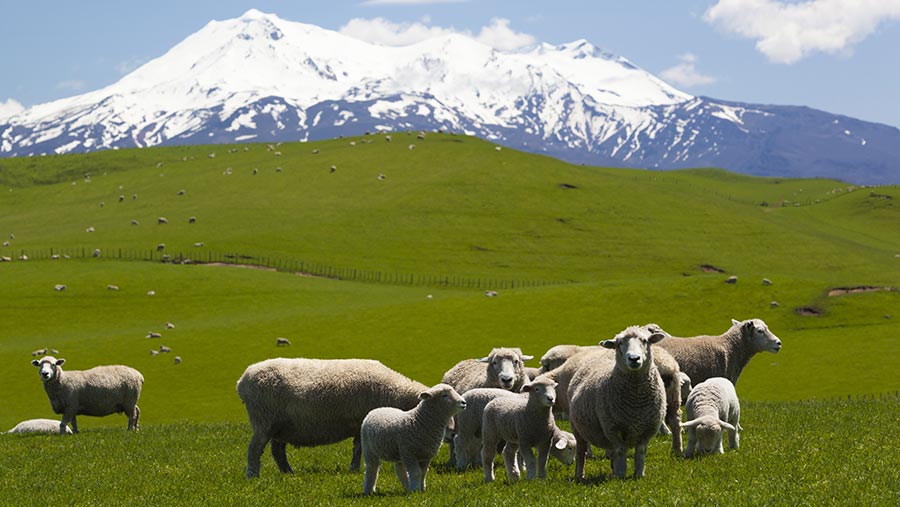Opinion: Why UK farms can have an edge over New Zealand rivals
 © Stuart Black / robertharding/REX/Shutterstock
© Stuart Black / robertharding/REX/Shutterstock Over the past 12 months I have visited numerous farms and agricultural companies involved in the red-meat sector throughout the UK.
Other than the top performing farm businesses, I believe that most UK farms have insufficient infrastructure, are under-stocked and have very inefficient pasture management. Furthermore, most farms require subsidy payments to be profitable.
See also: New Zealand sheep farmer shares his efficiency secrets
Indirectly, the subsidy system acts as a disincentive to efficient management. Farms can afford to run very low risk systems, allowing uncontrolled pasture management to provide low-quality feed buffers.
These subsidies, alongside extremely low change of ownership, mean that the majority of farms have relatively little or even no debt. The profit provided by payment schemes also means there is little incentive to innovate, improve or optimise systems.
This puts UK agriculture in a brilliant position.
Why? Because the industry is full of farms with massive latent potential. These farms can deliver more efficient production and profit, all from a very low-debt environment.
Though development may require some capital spending, many farms can see revolutionary efficiency changes simply by putting up some additional fencing and applying closer management of stock policies to match feed supply.
In stark contrast, New Zealand has the world’s most efficient farmers. The farms produce more product and profit per kg DM of inputs than any other country in the globe.
New Zealand farmers have reached this success through a transitional pathway, where history shows us the industry’s broad phases of development.
Phase One: primary production is subsidised and farmers are relatively inefficient due to the stifling of innovation and performance incentives.
Phase Two: subsidies are removed, a large portion of the sector suffers and lower performers drop out.
Phase Three: the top farmers excel in a non-subsidy environment and expand their businesses, picking up the place of those who have fallen out. Efficient, successful farming is achieved.
Phase Four: opportunities for improvement decrease, and farms are targeted in every direction by an industry seeking to “clip the ticket”. With farms already close to optimisation, margins come under pressure
Phase Five has two potential directions. Either the industry enjoys a period of stability and debt levels are reduced to enable financially resilient and sustainable farms, or external shocks apply (interest rate rises, strict environmental regulations are introduced) causing more farms to drop out, similar to Phase One.
New Zealand is currently in Phase Four, while UK farms are at Phase One.
There’s a common saying that “the early bird gets the worm”. New Zealand has flourished from the success of a globally-leading agricultural industry, delivered from a platform of the most efficient farmers in the world.
But there’s also a saying that “the second mouse gets the cheese”. The UK farming industry now has an opportunity to observe what has happened in New Zealand, learn from their failures and successes, and deliver a truly sustainable industry for the future.
In the current globalised world, there’s no doubt that, if the mouse trap snaps shut on New Zealand farms, the agricultural skills, knowledge and technology will be exported to other areas of opportunity.
So what’s next? For UK farmers, the ones that will survive and succeed in a post-Brexit world are the ones who can undergo the mind-shift to look at their farms as a business, and start analysing their systems.
Better pasture management, more efficient animals and smarter stocking policies will all be characteristics of the profitable farmers in the next phase of UK agriculture.
The best part? There is a wealth of knowledge, technology and resources available both in the UK and internationally to ensure farms are optimising performance. Now it’s just a case of getting stuck in and doing it.
Jack Keeys is a technical specialist at Farmax Ltd
